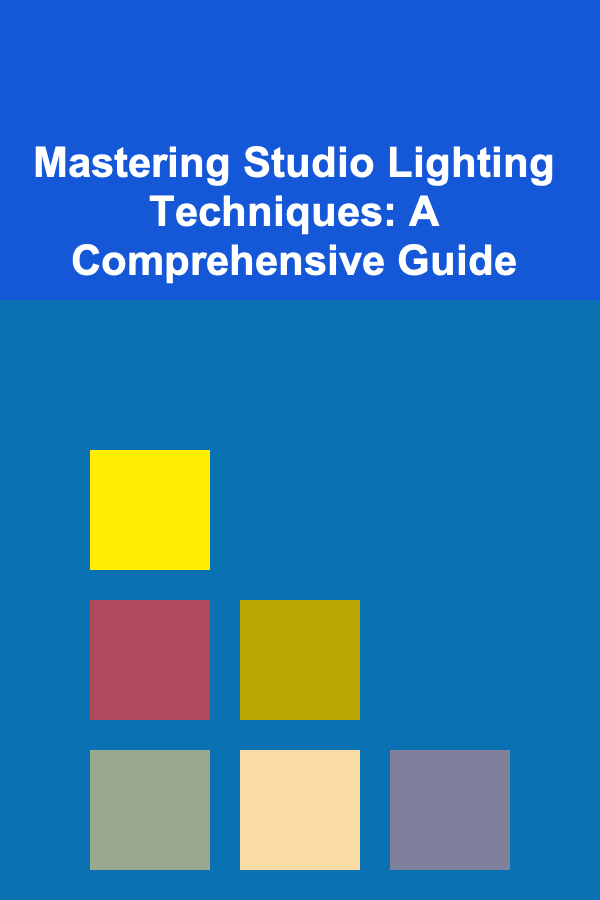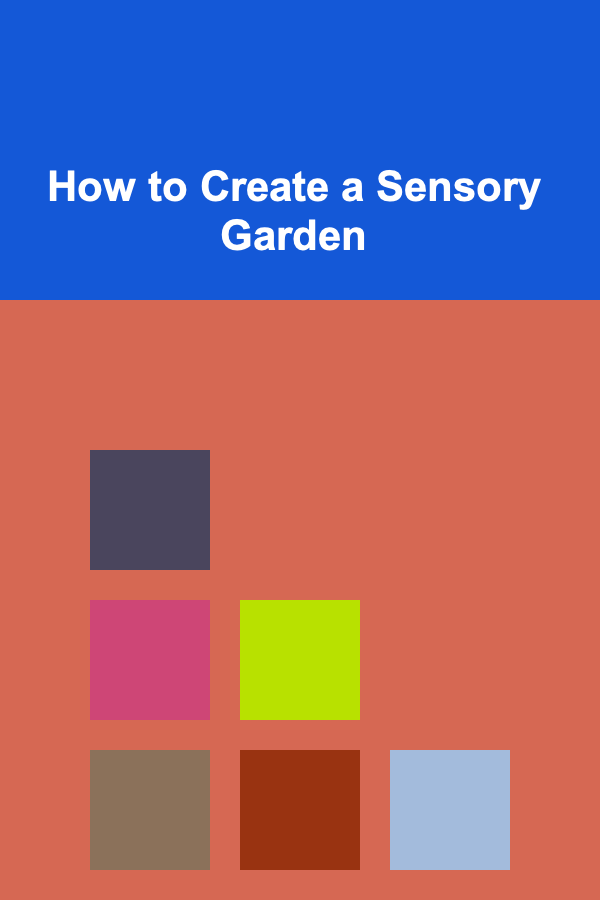
Mastering Studio Lighting Techniques: A Comprehensive Guide
ebook include PDF & Audio bundle (Micro Guide)
$12.99$6.99
Limited Time Offer! Order within the next:

Introduction: Illuminating the Art of Photography
Studio lighting is the cornerstone of controlled photographic artistry. Unlike the unpredictable nature of natural light, studio lighting provides the power to shape, sculpt, and define your subject with meticulous precision. Mastering these techniques unlocks a world of creative possibilities, allowing you to consistently achieve stunning and impactful images regardless of external conditions. This guide aims to provide a comprehensive understanding of studio lighting principles, equipment, and practical applications, enabling you to elevate your photography to a professional level.
Think of studio lighting as painting with light. You're not just capturing an image; you're crafting it. By carefully manipulating light intensity, direction, quality, and color, you can evoke specific moods, highlight key features, and create a visual narrative that captures the viewer's attention. This guide will delve into the fundamental elements of studio lighting and progressively build upon them, equipping you with the knowledge and skills to confidently navigate the world of studio photography.
Understanding the Fundamentals: The Building Blocks of Light
1. Light Intensity: The Power of Brightness
Light intensity, often measured in lux or foot-candles, refers to the amount of light falling on a subject. Controlling light intensity is crucial for achieving the correct exposure in your photographs. Too little light results in underexposure, while too much light leads to overexposure. Your camera's ISO, aperture, and shutter speed all work together to regulate the amount of light reaching the sensor, but the intensity of your light sources plays a fundamental role.
In the studio, you can control light intensity using several methods:
- Adjusting the power output of your lights: Most studio strobes and continuous lights have adjustable power settings.
- Changing the distance between the light source and the subject: The inverse square law states that light intensity decreases proportionally to the square of the distance. Doubling the distance reduces the light intensity to one-quarter.
- Using light modifiers: Softboxes, umbrellas, and reflectors can diffuse and redirect light, affecting its intensity.
2. Light Direction: Shaping the Form
The direction from which light strikes your subject dramatically influences its appearance. The angle of incidence determines the patterns of light and shadow, revealing form, texture, and dimension. Experimenting with different light directions can create a wide range of effects, from dramatic high-contrast images to soft, flattering portraits.
Consider these common lighting positions:
- Front Lighting: Light placed directly in front of the subject minimizes shadows, creating a flat, even illumination. This is often used for product photography but can be unflattering for portraits as it tends to flatten facial features.
- Side Lighting: Light placed to the side of the subject creates strong shadows, emphasizing texture and form. This is ideal for dramatic portraits or highlighting details in objects.
- Back Lighting: Light placed behind the subject creates a silhouette or rim light effect. This can be used to separate the subject from the background or to create a sense of mystery.
- Top Lighting: Light placed directly above the subject can create dramatic shadows under the eyes and chin. It's often used for specific effects but can be unflattering if not carefully controlled.
- Bottom Lighting: Light placed below the subject creates an unnatural and often unsettling effect, often used in horror or thriller genres.
3. Light Quality: Hard vs. Soft
Light quality refers to the characteristics of the light itself, specifically whether it is "hard" or "soft." This quality determines the sharpness of the shadows and the overall feel of the image.
- Hard Light: Hard light comes from a small, direct light source, such as a bare bulb or a speedlight without a modifier. It produces strong, well-defined shadows with sharp edges, creating a high-contrast image. Hard light can emphasize texture and create a dramatic effect but can also be unflattering for portraits as it accentuates imperfections.
- Soft Light: Soft light comes from a large, diffused light source, such as a softbox, umbrella, or window. It produces soft, gradual shadows with less contrast, creating a more flattering and forgiving illumination. Soft light is ideal for portraits, beauty photography, and product photography where a smooth, even look is desired.
The size of the light source relative to the subject determines whether the light is hard or soft. A small light source will always produce harder light than a large light source, even if they have the same intensity. This is why moving a small speedlight closer to the subject will soften the light slightly, as it increases its apparent size.
4. Light Color: Setting the Mood
Light has a color temperature, measured in Kelvin (K), which affects the overall mood and feel of the image. Different light sources emit light with different color temperatures, ranging from warm (yellowish-orange) to cool (bluish-white).
- Warm Light (low Kelvin): Warm light, around 2700K-3000K, has a yellowish-orange tint and is often associated with coziness, comfort, and intimacy. It's commonly used in interior lighting and can be flattering for skin tones.
- Neutral Light (around 5500K): Neutral light, around 5000K-6000K, is similar to daylight and is considered "white" light. It provides accurate color rendition and is often used in studios for general photography.
- Cool Light (high Kelvin): Cool light, above 6000K, has a bluish tint and is often associated with coldness, sterility, and technology. It's commonly used in industrial settings and can create a dramatic or futuristic effect.
Your camera's white balance setting allows you to compensate for different color temperatures, ensuring that your images have accurate colors. However, you can also use different color temperatures creatively to evoke specific moods and emotions. You can also use gels on your strobes to change the color of the light directly.
Essential Studio Lighting Equipment: Your Toolkit for Success
1. Light Sources: Strobes vs. Continuous Lights
The primary light source is the heart of your studio setup. You have two main options: strobes (also known as flash units) and continuous lights.
- Strobes (Flash Units): Strobes emit a brief, powerful burst of light when triggered. They are typically more powerful than continuous lights, making them ideal for freezing motion and overcoming ambient light. Strobes are also more energy-efficient and generate less heat. The power of a strobe is measured in watt-seconds (Ws).
- Continuous Lights: Continuous lights emit a constant stream of light. They are easier to see the effect of in real-time, making them a good choice for beginners. Continuous lights are available in various technologies, including tungsten, LED, and fluorescent. LED lights are becoming increasingly popular due to their energy efficiency, long lifespan, and cool operation.
The choice between strobes and continuous lights depends on your specific needs and preferences. Strobes are generally preferred for professional photography due to their power and efficiency, while continuous lights are often favored for video and by beginners who want to see the effect of the light in real-time. Hybrid systems, such as LED panels with integrated flash functionality, are also becoming increasingly common.
2. Light Modifiers: Shaping and Sculpting Light
Light modifiers are essential tools for controlling the quality, direction, and intensity of light. They shape and sculpt the light, allowing you to create a wide range of effects.
- Softboxes: Softboxes are enclosed light modifiers that diffuse light, creating a soft, even illumination. They are available in various shapes and sizes, with rectangular and octagonal softboxes being the most common. The larger the softbox, the softer the light.
- Umbrellas: Umbrellas are reflective or translucent surfaces that soften and spread light. They are more affordable and portable than softboxes but offer less precise control. Reflective umbrellas bounce light back towards the subject, while translucent umbrellas diffuse light as it passes through.
- Reflectors: Reflectors are used to bounce light back onto the subject, filling in shadows and adding highlights. They are available in various colors, including white, silver, gold, and black. White reflectors provide a soft, neutral fill light, silver reflectors provide a brighter, more specular fill light, gold reflectors add warmth to the light, and black reflectors (also known as flags) absorb light, creating deeper shadows.
- Beauty Dishes: Beauty dishes are circular reflectors with a small deflector plate in the center that prevents direct light from hitting the subject. They create a unique light quality that is somewhere between hard and soft, emphasizing detail while still being flattering.
- Snoots and Grids: Snoots and grids are used to control the spread of light, creating a narrow beam of light. Snoots are conical attachments that focus the light into a tight circle, while grids are honeycomb-shaped attachments that direct the light in a more controlled manner. These are useful for highlighting specific areas of the subject or creating dramatic effects.
3. Light Stands: Providing Support
Light stands are essential for holding your light sources and modifiers in place. Choose sturdy and adjustable light stands that can support the weight of your equipment. Consider investing in stands with air cushioning to prevent equipment damage if a section accidentally slips.
4. Triggers and Receivers: Synchronizing Your Lights
If you're using strobes, you'll need a way to trigger them in sync with your camera. Triggers and receivers use radio frequencies or infrared signals to communicate between your camera and the strobes. Radio triggers are generally more reliable than infrared triggers, especially in bright environments.
5. Backgrounds: Setting the Stage
The background plays a crucial role in the overall look of your image. You can use paper backgrounds, fabric backdrops, or even painted walls. Choose a background that complements your subject and the overall mood you're trying to create. Seamless paper backgrounds are popular for their versatility and ease of use.
6. Other Accessories: Completing Your Setup
Other useful accessories include:
- Gels: Gels are colored filters that can be placed over your lights to change their color temperature or add creative effects.
- Scrims: Scrims are translucent panels that are used to diffuse light or reduce its intensity.
- Flags: Flags are opaque panels that are used to block light or create shadows.
- Clamps and Clips: Clamps and clips are useful for holding backgrounds, reflectors, and other accessories in place.
- Light Meters: A light meter is a device that measures the intensity of light, helping you to achieve accurate exposure. While modern cameras have excellent metering systems, a handheld light meter can provide more precise readings, especially in complex lighting situations.
Essential Lighting Setups: Practical Applications
1. One-Light Setup: Simplicity and Elegance
The one-light setup is the foundation of studio lighting and is an excellent starting point for beginners. It involves using a single light source, typically with a modifier, to illuminate the subject.
Technique: Place the light source to the side of the subject at a 45-degree angle. Use a softbox or umbrella to soften the light and create flattering shadows. You can use a reflector on the opposite side of the subject to fill in the shadows and add highlights.
Use Cases: Simple portraits, product photography, headshots.
2. Two-Light Setup: Adding Dimension and Control
The two-light setup adds more control and dimension to your lighting. It typically involves using a main light (also known as a key light) and a fill light.
Technique: Place the main light to the side of the subject at a 45-degree angle. Use a softbox or beauty dish to create a flattering light. Place the fill light on the opposite side of the subject to fill in the shadows created by the main light. The fill light should be less powerful than the main light to maintain some contrast.
Ratio: The difference in intensity between the main light and the fill light is called the lighting ratio. A common starting point is a 2:1 ratio, where the main light is twice as bright as the fill light. You can adjust the ratio to create different effects, from high-contrast, dramatic images to low-contrast, soft images.
Use Cases: Portraits, fashion photography, product photography.
3. Three-Light Setup: Creating Depth and Separation
The three-light setup adds a third light, typically a backlight or hair light, to separate the subject from the background and create more depth.
Technique: Use a main light and fill light as described above. Place the backlight behind the subject, pointing towards the back of their head or shoulders. The backlight should be less powerful than the main light and fill light. You can use a snoot or grid to control the spread of the backlight.
Use Cases: Portraits, fashion photography, commercial photography.
4. Clamshell Lighting: A Flattering Portrait Technique
Clamshell lighting is a popular technique for portraits, creating a soft, even illumination that is flattering for skin tones.
Technique: Place a main light above the subject, pointing downwards at a 45-degree angle. Place a reflector or a second light below the subject, pointing upwards to fill in the shadows. The reflector or fill light should be less powerful than the main light.
Use Cases: Beauty portraits, headshots.
5. Rembrandt Lighting: Classic Dramatic Portraits
Rembrandt lighting is a classic portrait technique named after the famous painter, known for its characteristic triangle of light on the subject's cheek.
Technique: Position the main light to the side and slightly behind the subject, so that a shadow is cast from the nose onto the cheek, creating a small triangle of light. Use a reflector or a fill light on the opposite side to soften the shadows slightly. The key is to create a defined, but not overpowering, triangle of light.
Use Cases: Dramatic portraits, character studies.
Advanced Techniques: Refining Your Craft
1. Gelling Your Lights: Adding Color and Mood
Gels are colored filters that can be placed over your lights to change their color temperature or add creative effects. You can use gels to create a specific mood, correct color casts, or add a pop of color to your images.
Technique: Attach a gel to your light source using a gel holder or tape. Experiment with different colors and combinations to create unique effects.
Use Cases: Fashion photography, music videos, creative portraits.
2. Using Gobos: Creating Patterns and Texture
Gobos (short for "go betweens") are stencils that can be placed in front of a light source to project patterns and textures onto the subject or background. You can use gobos to create a wide range of effects, from simple shapes and patterns to complex textures and scenes.
Technique: Place a gobo in front of a light source using a gobo holder or a projector. Focus the light to create a sharp pattern on the subject or background.
Use Cases: Fashion photography, theatrical productions, creative portraits.
3. High-Key and Low-Key Lighting: Controlling the Tone
High-key and low-key lighting are techniques that control the overall tone of the image, creating a specific mood and atmosphere.
- High-Key Lighting: High-key lighting involves using bright, even illumination to create a light and airy feel. It typically involves using multiple light sources and reflectors to minimize shadows. High-key lighting is often used in beauty photography, wedding photography, and product photography.
- Low-Key Lighting: Low-key lighting involves using dark, dramatic illumination to create a moody and mysterious feel. It typically involves using a single light source and minimal fill light to create strong shadows. Low-key lighting is often used in dramatic portraits, film noir, and product photography.
4. Using Ambient Light: Blending Natural and Artificial Light
While studio lighting is about control, sometimes incorporating ambient light can add depth and realism to your images. This involves carefully balancing the intensity and color temperature of your studio lights with the existing ambient light.
Technique: Meter the ambient light in your scene. Adjust the power of your studio lights to complement the ambient light. Use gels to match the color temperature of your studio lights to the ambient light.
Use Cases: Location portraits, environmental portraits, interior photography.
5. Frequency Separation for Light Correction
Frequency separation, while primarily a retouching technique, can be incredibly useful for subtly adjusting light and shadow areas after a shot has been taken. It separates the image into high-frequency (details, texture) and low-frequency (tone, color) layers. By working on the low-frequency layer, you can dodge and burn, smoothing out gradients and evening out light without affecting the fine details of the skin or the texture of a product.
Practice and Experimentation: The Key to Mastery
Mastering studio lighting techniques is a journey that requires practice, experimentation, and a keen eye for detail. Don't be afraid to try new things, break the rules, and develop your own unique style. The more you experiment, the more you'll learn about the nuances of light and how to use it to create stunning images.
Key takeaways for continued learning:
- Shoot Regularly: Consistent practice is essential for developing your skills.
- Analyze Your Results: Critically evaluate your images and identify areas for improvement.
- Study the Work of Others: Analyze the lighting techniques used by photographers you admire.
- Stay Updated: Keep up with the latest trends and technologies in studio lighting.
- Don't be Afraid to Fail: Mistakes are a valuable learning opportunity. Embrace them and learn from them.
Conclusion: Your Journey to Lighting Excellence
Studio lighting is a powerful tool that can transform your photography from ordinary to extraordinary. By understanding the fundamentals of light, mastering essential equipment, and practicing advanced techniques, you can unlock a world of creative possibilities and consistently achieve stunning results. Embrace the challenge, experiment with different approaches, and never stop learning. With dedication and perseverance, you can master the art of studio lighting and elevate your photography to new heights. Remember, the best light is the one that tells your story the most effectively.
Reading More From Our Other Websites
- [Home Space Saving 101] How to Save Space in Your Bathroom with Clever Storage Hacks
- [Organization Tip 101] How to Create a Recipe Swap with Friends for Variety
- [Organization Tip 101] How to Set Up a Routine for Regular Home Maintenance
- [Organization Tip 101] How to Identify Fake Antiques and Avoid Scams
- [Hiking with Kids Tip 101] Nature Detective: Kid‑Friendly Observation Checklists for Hiking Journals
- [Personal Care Tips 101] How to Apply Blush on Bare Skin for a Fresh, Minimalist Look
- [Sewing Tip 101] Thread Talk: Understanding Fabrics, Threads, and Needle Types for Beginners
- [Home Budget Decorating 101] How to Plan an Interior Design Project in Budget-Friendly Ways
- [Home Storage Solution 101] How to Store Seasonal Clothing Without Taking Up Too Much Space
- [Home Staging 101] How to Use Before-and-After Photos for Staging Inspiration

Ace Your Retail Sales Role: Strategies and Insights for Success as a Retail Sales Associate
Read More
How to Create Your Own DIY Personal Care Products for Healthier Skin
Read More
How to Maximize Space in Small Dorm Rooms for School Supplies
Read More
Making Money with Deep Learning: A Beginner's Guide
Read More
How to Create a Sensory Garden
Read More
Understanding Financial Statements: A Comprehensive Guide
Read MoreOther Products

Ace Your Retail Sales Role: Strategies and Insights for Success as a Retail Sales Associate
Read More
How to Create Your Own DIY Personal Care Products for Healthier Skin
Read More
How to Maximize Space in Small Dorm Rooms for School Supplies
Read More
Making Money with Deep Learning: A Beginner's Guide
Read More
How to Create a Sensory Garden
Read More